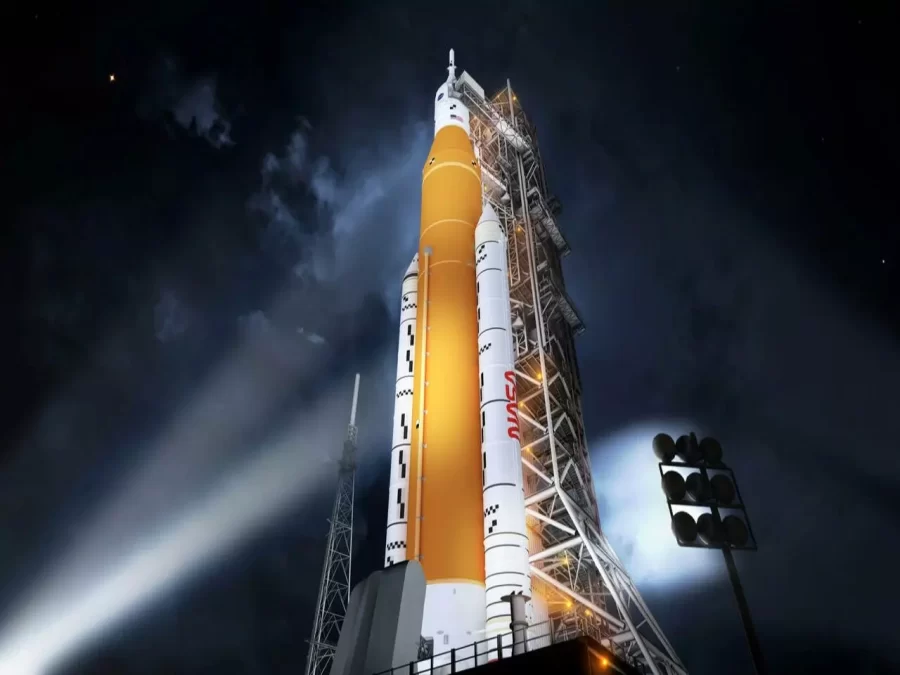Artemis Rocket Delay
September 2, 2022
For years, scientists and engineers at NASA have been developing a new rocket to launch: the Artemis 1. Artemis 1 is the first of a four launch mission to get Americans back to the moon.
Artemis 1’s mission is to send the uncrewed Orion spacecraft into space, around the moon, and back to Earth for a safe re-entry and splashdown.
Artemis 1 is not only an innovation in aerospace technology, but also in social development within the industry. Even though this part of the mission is unmanned, NASA plans to send the first woman and first person of color to the moon by the end of the Artemis missions if all goes well.
Onlookers from all around Florida flocked to the Kennedy Space Center to watch the launch on August 29th. Some were so eager to watch the launch that they camped overnight nearby. Unfortunately, these space enthusiasts were let down when the mission was scrubbed.
NASA officials credit this delay to engine problems. Engineers were concerned with the liquid nitrogen line, which acted as the engine coolant. This line was not functioning properly in one of the four engines. This meant the engine would overheat, which would cause the engine to crack.

In addition to the technical problems, bad weather would have prevented the launch anyway.
Engineers at NASA are hoping to try and launch Artemis 1 again on September 3rd. In addition to the pre-flight testing Artemis had been subjected to on Monday, a chill-down test will be added for the testing on Friday. This will allow engineers to assess if the problem has been resolved, which will indicate if there will be a launch.
Launch enthusiasts are disappointed, but the majority understand why NASA felt unsafe rushing the launch. Vice President Kamala Harris, who was supposed to give a speech about the Artemis 1 launch, defended the launch scrubbing to reporters as well. She pointed out that innovation requires testing. In a tweet, Harris says, “While we hoped to see the launch of Artemis I today, the attempt provided valuable data as we test the most powerful rocket in history. Our commitment to the Artemis Program remains firm, and we will return to the moon.” If this is rushed, catastrophic mistakes can occur.

The space industry is still scarred by the failed launch of the Challenger space shuttle on January 28th, 1986, which resulted in the death of all seven astronauts on board, including one school teacher. This catastrophe was caused by a failure in the rocket engine. Due to such a dramatic tragedy, NASA is understandably hesitant to launch a rocket that has even a chance of failure. With $93 billion spent on research, technology, it would be dangerous to push the Artemis mission too far before it is ready.
The future for the Artemis missions is undeniably optimistic. With this mission, mankind will be able to once again set foot on the moon. With new developments in technology, further research on the moon can take place.
Scientists at NASA are optimistic about potentially finding ice in craters. If water is discovered, colonizing the moon could become a much closer reality.
Engineers and scientists alike have also been researching the possibility of using water as the main ingredient in rocket fuel. If water is discovered on the moon, our lunar neighbor could become a refueling station for rockets with missions further out in space.
Despite the delay in the Artemis 1 launch, the mission as a whole is progressing. Artemis not only allows for development in the scientific field, but also in our nation’s pride. America can once again go to the moon, this time with a crew as diverse as our nation itself. With new technology, further research, and reaffirmed optimism in the space industry, the Artemis mission poses the world with one question: What’s next?








